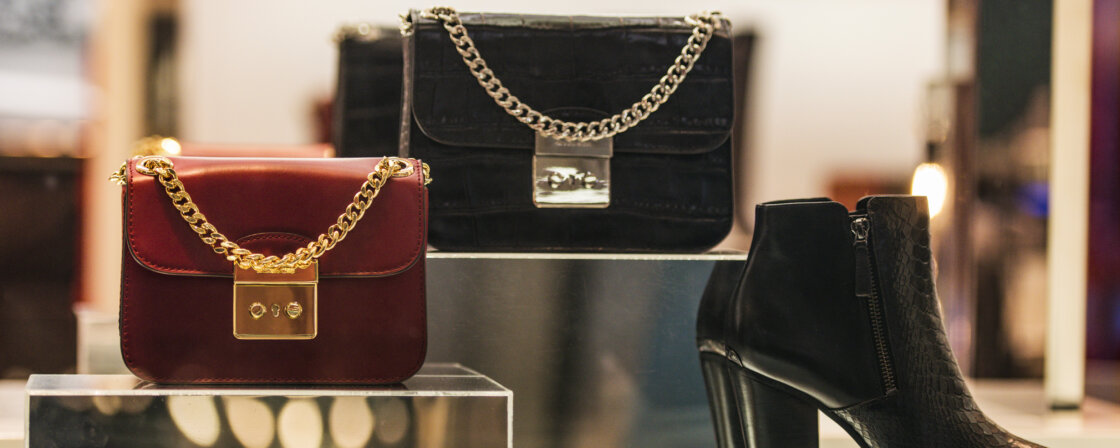What will the European trade mark protect?
A trademark protects specific goods and services that your company offers. However, when you apply, you can indicate not only the list of goods and services you offer at the moment, but also the goods or services you might offer in the near future. For example, you currently manufacture and sell T-shirts, but you could expand your business to include the manufacture of dresses and sweatshirts.
A trademark can take several forms:
- word mark – either inwords only or in combination with a graphic representation,
- pictorial – typical examples are brand logos, using non-standard characters, styling or layout, graphic elements or colour. It may also include a combination of text and image,
- spatial (three-dimensional) – it is a specific shape of the product or its packaging (typically Toblerone chocolate),
- positional – indicating the specific way in which the brand is placed or attached to the product,
- made up of colour – this marking requires a thorough demonstration of distinctiveness. This is not always successful, but in practice we can name the blue-silver combination of the Redbull mark,
- sound – made up exclusively of sound or a combination of sound and an olfactory marking or hologram,
- motion – it consists of movement or change of position of the elements of the mark,
- multimedia – consisting of a combination of image and sound,
- hologram – consisting of elements with holographic properties.
The ability of the EU trade mark to distinguish products and services from other similar products and services on the market is very important. As an example, the Apple brand can easily stand as a mark for the sale of stylish electronics. There would be a major problem with registering it for fruit growers specialising in apples.
Once you have a clear idea of the brand you want to register, you need to check whether it is actually available, in other words, whether a similar phrase, logo or packaging has been registered and used by someone else. You can check this in the TMView app, where you can browse many hundreds of millions of registered brands. Fortunately, the app makes it easy to search using a tutorial form.
Are you solving a similar problem?
Trademark registration
Starting a business and want to protect your new business? Or are you already an experienced entrepreneur and need to defend yourself against attacks from competitors? Protect your business that you put a lot of energy into and register a trademark.
I want to help
- When you order, you know what you will get and how much it will cost.
- We handle everything online or in person at one of our 6 offices.
- We handle 8 out of 10 requests within 2 working days.
- We have specialists for every field of law.
What is the advantage of a European trademark?
If you operate or are planning to operate in several EU member states, then a European trade mark is worthwhile from a procedural and possibly financial point of view. It will protect you against fraud and counterfeiting in all EU member states.
You do not have to go through the procedures of each national authority. At the same time, the cost of applying for an EU trade mark can be lower than the sum of the costs of paying for individual national trade marks. Of course, the number of countries where you want to break through and their national fees are decisive. The basic fee for filing a single trade mark is €850 for 10 years of protection. The mark is then valid for ten years and can be renewed thereafter, always again for ten years.
Tip for article
Tip: Have you created an interesting product or is your company taking off and becoming well-known? Avoid the situation we have dealt with many times with our clients, where their competitors have started to market a product under the same brand or name. We discuss trademarks granted under Czech law in a separate article.
Which institution manages the EU trade mark agenda?
The EU trade mark agenda is managed by the EUIPO, the European Union Intellectual Property Office, which maintains the register of EU trade marks and registers them.
What can I do to file a European trade mark?
An application for a European Union trade mark can be filed not only through the EUIPO, i.e. the European Union Intellectual Property Office, but also through the Industrial Property Office of a Member State, which marks the date of filing on the application and transmits it to the European Union Intellectual Property Office within 14 days. For the filing of the application itself, the applicant is required to pay a fee of CZK 500 to the Office (it is therefore not a fee for the registration of the mark).
You can file an EU trade mark application in this way in any of the official languages of the European Union. It should always be filed in one of the five official languages for intellectual property, which are English, German, Spanish, French or Italian. However, it is sufficient if this language is chosen as a second language.
The application must state:
- details of the applicant
- the characteristics of the trade mark
- an indication of the right of priority, if any, claimed by the applicant
- the method of payment of the fees associated with the application for a European Union trade mark.
The fees associated with a European Union trade mark are set out in the schedule of fees on the EUIPO website. A summary of the basic fees is set out below:
| Items | Fees |
|---|
| basic fee for an application for an individual EU trade mark | 1000 € |
| basic fee for an individual EU trade mark application - electronic filing | 850 € |
| fee for the second class of goods and services for an individual trade mark | 50 € |
| fee for the third and each additional class of goods for an individual EU trade mark | 150 € |
If you find that someone before you has already had a very similar idea for a brand, all is not lost. You can try to contact the person to see if they are actually using the brand and if an agreement can be reached. Otherwise, it’s up to you to rework the brand proposal. You can risk submitting despite the existence of a similar brand in the market, but this is also the most common reason for rejecting another brand. The EUIPO keeps a very close eye on these facts. If it registers many (or even just two) very similar marks, the protection would be meaningless.
Once an application has been filed, it is first examined by the Office itself, followed by a three-month opposition period for those who believe that their own mark could be confused with yours. If the application is refused, an appeal can be lodged against the decision.
What rights do you have after registering a trademark?
As the owner of the trademark, you have the exclusive right to use it. No one else may use or copy it. You can also use the ® symbol, which represents the registered trademark.
A trademark gives you a guarantee that no one else may use the same or a confusing trademark for the same or similar goods and services without your consent (it is different, however, if a competitor registers the trademark in a completely different class of goods or services). However, if someone were to use your trade mark, you can ask the court to order the withdrawal of their product or service from the market and you will be entitled to compensation for any damages.




